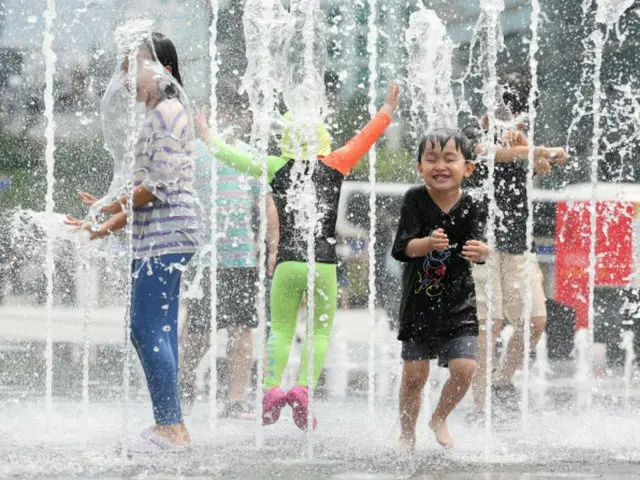The total number of extremely hot days has already reached four times the average number of extremely hot days in June in a normal year (1991-2020 average), which is 0.6 days. Extremely hot days are days when the daytime maximum temperature reaches or exceeds 33 degrees Celsius.
With the expansion of the meteorological observation network across the country, the number of extremely hot days in the summer (June to August) was the highest since 1973, when the standard for various meteorological records was established, and the number of extremely hot days in June 2018 was 1.5 days.
The number of days of extreme heat increased significantly in July, when the heat wave hit, to 15.4 days, and in August to 14.1 days. The second-highest number of days of extreme heat was recorded in June 1994, when 0.9 days were recorded, followed by 17.7 days in July and 9.8 days in August.
The heat continued in January, with 1.2 days of extreme heat. The reason the heat arrived so early this year was that a mobile high pressure system caused sunny days with lots of sunlight and even brought southwesterly winds.
The rainy season began in Jeju on the 19th of this month, and the rainy season also began in the southern region on the 22nd, so temperatures are expected to calm down for a while.
The Japan Meteorological Agency predicts that next week morning temperatures will be between 18 and 24 degrees, and daytime temperatures between 25 and 31 degrees, both below average.
The forecast predicts that temperatures will be the same or slightly higher than the current average of 18 to 21 degrees Celsius, with maximum temperatures of 25 to 29 degrees Celsius. However, once the rainy season ends, it is expected that the full-scale "humid" weather will arrive.
Considering the characteristics of Korean summers, which usually start to get hot in June, calm down for a while during the rainy season, and then return to heat in July and August,
The prediction is that the heatwave in June is just the beginning. While the heatwave in June was a "dry heatwave" caused by a moving high pressure system, the heatwaves in July and August will be caused by the North Pacific high pressure system, which carries hot, humid air.
At times, the heat can feel like being in a wet sauna. Lee Myung-in, director of the Extreme Heat Research Center at the Ulsan Institute of Science and Technology (UNIST), said at a seminar for reporters held by the Korea Meteorological Administration on the 7th of this month.
In the Elephant Course, based on predictions made using artificial intelligence (AI) machine learning, it was predicted that the number of extremely hot days this year will be more than average (10.2 days).
The director of the center said, "In July, precipitation in East Asia will increase and there will be fewer extremely hot days, but there will be 'humid heat waves' and tropical nights between the rains.
"There is a high possibility of a large-scale tropical cyclone occurring in August, when the winter El Niño will transition to La Niña, and temperatures may tend to rise," he said. "The hot weather will continue from late July to mid-August.
"There is a possibility of continued dangerous heat."
2024/06/23 21:37 KST
Copyrights(C) Edaily wowkorea.jp 78

